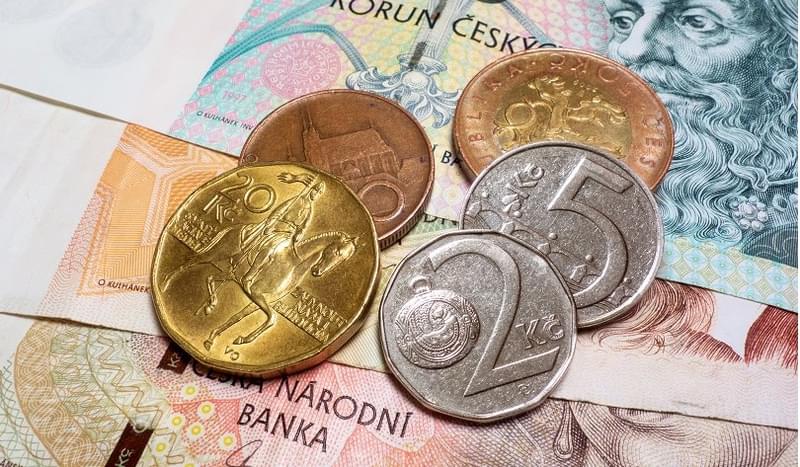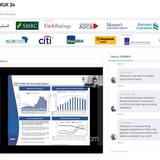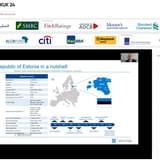The Swiss may be best in the world on chocolate, watches and banking, but next time the country decides to unpeg its currency, it may want to heed the example of its Eastern neighbour, the Czech Republic, whose pre-emptive floatation of the koruna has been deemed a success by observers.
For the best part of 2016, currency speculators have been drooling over the promise of a post-flotation bonanza with the koruna akin to the surprise de-capping of the Swiss franc in January 2015, which sparked a 41% jump in the currency.
Eager to avoid rapid appreciation and volatility, the CNB has been very open about its monetary policy plan, signalling its moves to the market regularly, after the cap was introduced in 2013 in an effort to stave off deflation.
The koruna averaged at CZK25.66 per euro for 12 months prior to the peg, so when it was capped at around the 27 mark, hot flows began to pour in. Bloomberg estimates that US$65bn of speculative capital was held in local assets by Q12017. And, according to Reuters, foreign accounts held 42% of about CZK1.4tn (approx. US$55.98bn) of Czech domestic bonds in February, double the volumes seen in 2015.
However, after an initial surge – a rather modest 1.1% to a high of CZK26.52 – following the cap removal on April 6, the koruna gradually began its retreat and by 20 April actually crossed the former cap level of CZK27 before rebounding to CZK26.92 by the afternoon. Notably, this reaction was well anticipated by the CNB.
“The apparent ‘overboughtness’ of the koruna market would prevent the exchange rate from appreciating sharply,” a CNB statement warned. Analysts agree that from the government and monetary perspective, the flotation was somewhat premature, but with good reason.
“From a domestic monetary policy point of view it made perfect sense,” said Gunter Deuber, Head of Economics, Fixed Income, and FX Research at Raiffeisen Bank International. “Initially we had thought that the CNB would not like to move too early ahead of the ECB taking out some stimulus.”
The expert went on to suggest that concerns about mid-term koruna strengthening may have forced the CNB to make interest rate moves ahead of the ECB, but that does not seem to be the case now.
“The floatation was achieved without too much of noise and market volatility. The latter is definitely a good thing and from a near-term perspective the most important aspect,” Deuber added.
Tatha Ghose, Senior EM Economist at Commerzbank, agreed that strong prior signalling and the decision to make a pre-emptive move allowed the CNB to avoid unnecessary volatility and financial stress, although the Central Bank has kept a backdoor open for a potential return of the cap.
“Judging by minutes of the board meeting, it appears that a pile of long koruna positions was creating problems for them, in terms of speculation and increased FX intervention requirements, which led to a more unpredictable medium term inflation outlook. So they had to pull the trigger, somewhat prematurely, according to some observers, despite a less sanguine medium-term inflation outlook.”
“They slipped in another caveat, which dictates that in the future, should they choose to re-impose the peg if inflation returns, they can position it at a different level,” Ghose noted, admitting such a move is nevertheless unlikely. “Such a system eventually turns cumbersome.”
However, suggestions about the de-capping being driven by inflationary pressures are wide of the mark, the Commerzbank economist claimed. Because the cap was essentially a static floor, it had a one-off impact on inflation, rather than creating an inflation pass-through every year since.
Regarding suggestions that the CNB should have exited earlier, as a knee-jerk reaction to higher inflation data and the start of US Fed hiking cycle, that has also proven to be a phase.
“Eurozone 10-year yield is breaking down from recent ranges, inflation expectations are heading down. So if the whole cycle flops back, there could be questions even about the Fed continuing to hike, let alone the weaker ECB and Eastern European central banks. So I wouldn’t worry about the fact that inflation overshot the target early this year – it is a commodity & energy price phenomenon that is already partially reversing,” he concluded.
Should I Stay or Should I Go?
The removal of the cap, then, looks to have been impeccably executed and potential pitfalls, at least for now, have been avoided.
However, from the perspective of Czech bond holders and investors who took a long bet on the koruna, the lack of a rally has created a dilemma. Some have already begun to abandon their long koruna positions, eager to cut their losses, while others are patiently waiting for gradual appreciation that they hope is still on the horizon.
Fluctuating inflationary shifts, uncertainty about interest rates and political instability manifested in the upcoming French and German elections are creating additional risk factors that factor into investors’ decision-making.
“The currency was kept artificially weak, so it hasn’t become overinflated – right now it is depreciating because people, who had been waiting for a windfall, are trying to get out of their long positions. The Bank says it could take a couple of months before all these positions have cleared out,” Ghose said.
Unlike the Swiss franc “de-capping”, where the move came unexpectedly and led to a one-shot 10-20% appreciation, the CNB did not move the peg far from the 2013 market rate, and the equilibrium it found since hasn’t deviated dramatically.
“What we are seeing is a bouncing rate that goes down to CZK26.60 on speculative trading, then as people get out it goes back up towards 27 again. If, in that process, somebody who doesn’t like the negative carry is under pressure from risk holders and is forced to abandon these positions, there is a risk of a disorderly unwinding on certain days, leading it to rise as high as CZK28, for example,” he concluded, speculating that the trend will be towards 26 per euro by the end of this year, and even 25 in 2018.
Similarly, in the debt markets there are hopes that yields will start to pick up gradually, which so far have not materialised. According to Reuters, since August 2015 the government has issued around CZK247bn (approx. US$9.90bn) at yields that since October 2014 have been near or below zero.
The yield on the 2-year bonds, which fell to -0.83% in January, has risen more than 20bp since the cap exit and hit an eight-month high of -0.25% a week after the unpegging. Whether yields will cross into positive territory any time soon is up for debate.
“We do not see too much upside pressure on Czech local currency government bonds as a healthy spread over German bunds is currently there, which had been priced in since the global reflation trend in Q4 2016 started,” Deuber commented.
The analyst expects a modest 40bp rise in yields until year-end, less than the 60bp expected for the bunds; the spreads against bunds may actually decline somewhat, from 70bp to 50bp, while potential currency gains might compensate for the price loss.
“So Czech LCY debt is from our understanding a fairly good place to shield yourself in a high-grade sovereign credit from the looming rise in European benchmark yields going forward in 2017,” the expert concluded.
Unless the koruna weakens significantly against the euro, Deuber is sceptical about any significant benchmark rate movements this year. Ghose, likewise, doesn’t expect any benchmark rate shifts as inflation is likely to flop lower and not accelerate.
“It is possible that they may do a one-time adjustment from 0.05% to 0.25%, staying close to a technical zero. That would normalize the money markets and push bond yields out of negative territory,” he clarified.
But even if yields begin to inch up, Ghose does not believe that it is going to become significantly more attractive in the EM universe in the near future.
“Investors were there only because of the windfall created on the FX side, not because Czech asset valuations were attractive; Czech assets are overvalued because, say, in terms of hard currency bonds, there is not much supply; they are often more expensive than, say, bunds – not because of lower risk, but because of surplus of EM dedicated funds that have emerged in the last 5 years, which have to hold these benchmark bonds. But there just aren’t enough of them to hold,” the Commerzbank expert stated.
The consensus in Q1 was that inflation has returned, labour markets are tightening and it is time for normalization, but, according to Ghose those notions are already being thrown into question. After a 25-30 year downward trend, and massive monetary stimulus globally, expansion is increasingly hard to come by.
“The economies were overheated in 2007, but inflation was not particularly surging. So tight local labour markets and dropping unemployment rates do not actually mean that we will witness any pass-through to core inflation; they haven’t for decades,” Ghose concluded.
The CNB has shown itself capable of providing clear signalling and guidance and maintaining stability through shrewd and predictable monetary policy. But ultimately, as upward inflation dynamics falter, it will be up to the ECB and the monetary policy makers in Germany, France and the UK to find new ways of boosting European economies, whether through helicopter money, universal basic income or other innovative and outside-the-box solutions.









